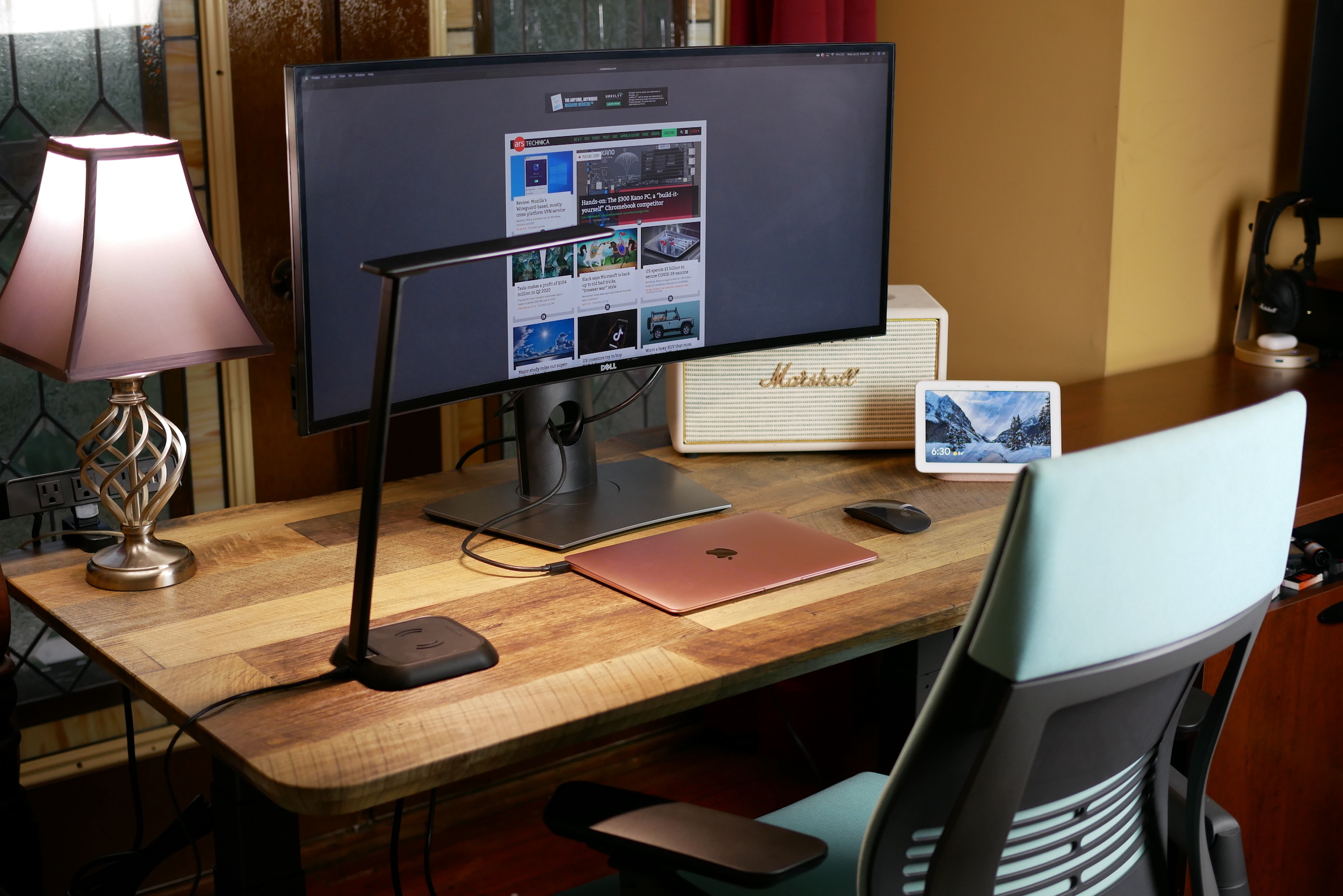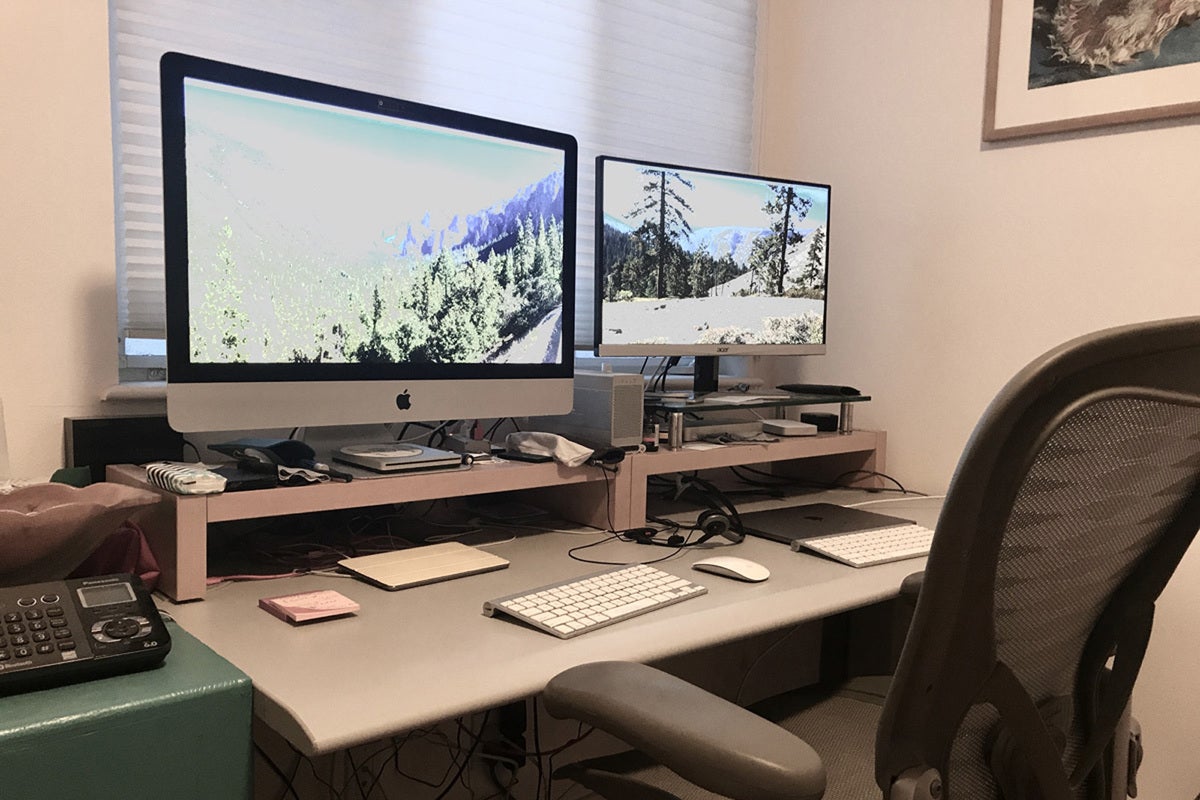Assuming you want a blog post about setting up a home office computer:
When working from home, having a dedicated space for your office is crucial to maintaining productivity. But what’s even more important is making sure that your home office computer is set up correctly.
By taking the time to set up your computer properly, you can avoid frustration and wasted time down the road. Here are some tips for setting up your home office computer:
Choose a comfortable, ergonomic chair and desk setup.
This will help you avoid back pain and other issues that can come from sitting in an uncomfortable position for long periods of time.
Make sure your monitor is at the correct height. You should be able to look straight ahead at the screen without strain or having to tilt your head up or down.
If needed, use a monitor stand or books to prop it up to the proper level.
Your keyboard and mouse should also be positioned comfortably within reach so you’re not straining to use them. Again, ergonomics are key here – if possible, invest in an ergonomic keyboard and mouse that will fit your hand size and grip style perfectly.
If you work from home, or even if you just want a place to keep your personal computer, you need to have a home office set up that meets your needs. Here are some tips on setting up a functional and stylish home office.
First, choose a room that will be dedicated to your office.
This will help you stay focused and avoid distractions. If possible, choose a room with natural light and good ventilation.
Next, select furniture that is comfortable and functional.
A desk and chair are essential, but you may also want to add a filing cabinet or bookcase. Choose pieces that fit the space and meet your budget.
Now it’s time to set up your computer station.
Make sure your desk is large enough to accommodate your monitor, keyboard, and mouse. Place your printer within reach so you can easily print documents when needed. Consider investing in ergonomic accessories to help reduce stress on your body while working long hours at the computer.
Finally, add some personal touches to make your office feel like YOUR space. Hang artwork or photos that inspire you, add some plants for fresh air and greenery, and use fun desk accessories to brighten up the space (but don’t go overboard!).

Credit: arstechnica.com
What is Best Computer Setup for Home Office?
There is no one-size-fits-all answer to this question, as the best computer setup for a home office depends on the specific needs of the person using it. However, there are some general tips that can help create a comfortable and efficient workspace.
One important consideration is ergonomics.
When you are spending long hours at a desk, it is important to make sure that your posture is good and that you have all the necessary support to avoid strain on your body. A well-designed office chair and desk will go a long way in ensuring comfort, while a standing desk or adjustable laptop stand can also be helpful for those who need to move around more during the day.
Another key factor is storage.
A tidy workspace can help boost productivity, so it is important to have enough storage space for all of your materials, whether that means physical files or digital documents. This might mean investing in a good filing cabinet or setting up some shelving units. For those who work with sensitive data, secure storage solutions such as locked cabinets may be necessary.
Finally, think about how you will use your home office space and what type of equipment you will need to be able to work effectively. If you frequently need to print documents or scan items, then having a printer nearby will be important. If you rely heavily on video conferencing or online collaboration tools, then making sure your internet connection is fast and reliable should be a priority.
By taking into account these various factors, you can create a home office setup that meets your individual needs and helps you be as productive as possible.
What Do You Need for a Home Office Computer?
Assuming you would like an in-depth guide on outfitting your home office with a computer:
First, you will need to decide if you want a desktop, laptop, or tablet computer. Each has its own set of pros and cons that should be considered before making a decision.
Desktop computers are typically more powerful than laptops, but they take up more space and require an external monitor, keyboard, and mouse. Laptops are smaller and more portable than desktops, but they may not have the same processing power or expandability. Tablets are even more portable than laptops and can be used for basic computing tasks and web browsing, but they may not be suitable for more demanding applications.
Once you’ve decided on the type of computer you want, there are a few other things to consider when outfitting your home office:
– Operating system: Windows, macOS, Linux?
– Processor: Intel or AMD?
– Memory (RAM): 4GB or 8GB?
– Storage (hard drive): 500GB or 1TB?
– Graphics card: integrated or dedicated?
These are just some of the key considerations when choosing a computer for your home office. There is no single “best” option for everyone – it depends on your specific needs and budget. But by taking the time to do your research beforehand, you can ensure that you end up with a machine that’s well suited to help you get work done at home.
How Do I Setup My Home Office from Home?
Assuming you have a room to dedicate as your home office, there are a few things you’ll need to do to get started.
First, consider the layout of the room and how you want to arrange your furniture. You’ll need a desk, of course, but think about whether you want a traditional desk with a chair or if you’d prefer something like a standing desk.
Then decide on where you want to put your computer monitor—on top of the desk, or mounted on the wall?—and whether or not you need any additional shelving or storage for books and files.
Once you have an idea of the layout, it’s time to start setting up your office.
If possible, position your desk near a window so you can take advantage of natural light during the day. But even if that’s not possible, make sure the lighting in your office is bright enough so that it doesn’t strain your eyes.
Next, set up your computer equipment.
If you don’t already have one, invest in a good quality ergonomic keyboard and mouse; these will help reduce strain on your wrists and hands as you type and click away. Once everything is plugged in and turned on, open up all the programs you think you’ll need for work—your word processor, spreadsheet program, email client, etc.—and arrange them how you like on your screen(s).
Finally, add any personal touches that will make working from home more comfortable for you. This could be anything from hanging some art on the walls to filling a vase with fresh flowers for your desk. And don’t forget to stock up on coffee (or tea)!
How Do I Set Up a Small Home Office?
Assuming you would like tips for setting up a small home office:
1. Choose a room or area to designate as your workspace. It should be quiet and free from distractions.
2. Make sure the space is well-lit, both for natural light and task lighting. Consider investing in a good quality desk lamp.
3. declutter the area and make sure it’s clean and organized before setting up your furniture and equipment.
This will help you feel more productive in the space.
4. Select furniture that is proportionate to the size of the room or area, so that it doesn’t look cramped or cluttered. A small desk and chair are ideal for most home offices.
5 stock your office with basic supplies like paper, pens, pencils, stapler, etc., so you don’t have to leave your workspace every time you need something..
6 set up any technology you will need, such as a computer, printer/scanner, wireless internet router , etc..
Make sure everything is within easy reach so you don’t have to waste time getting up and down from your chair .
7 Finally , add personal touches like photos , artwork , or plants to make the space feel like yours .
Work From Home Office Ideas (Desk Setup Tours)
Home Office Set Up
Setting up a home office can be a daunting task. But with a little planning and some forethought, you can create a space that is both functional and stylish.
Here are a few tips to get you started:
1. Choose a location. The first step is to choose a location for your home office. If you have the space, opt for a room that can be dedicated solely to work.
If not, look for an unused corner or nook that can be converted into a makeshift office.
2. Furnishings matter. Once you’ve selected your location, it’s time to start thinking about furnishings.
A desk is an essential piece of furniture for any home office, so make sure to choose one that fits your needs (and budget). Other important considerations include chairs, filing cabinets, and shelving units.
3. Consider ergonomics.
When setting up your home office, it’s important to keep ergonomics in mind. This means choosing furniture and equipment that will help reduce strain on your body while working long hours at your desk. For example, an adjustable chair with good lumbar support will help prevent back pain, while a standing desk will allow you to move around more throughout the day and avoid stiffness in your joints.
Conclusion
If you’re one of the millions of people who are now working from home, you might be wondering how to set up your home office for maximum productivity. Here are some tips to help you get started:
First, choose a quiet and comfortable spot in your home where you can work without distractions.
Then, make sure you have all the essentials like a desk, chair, and good lighting. Once your workspace is set up, it’s time to focus on creating a routine that works for you.
Start by setting regular hours for yourself and sticking to them as much as possible.
Then, take breaks throughout the day to move around and stretch your muscles. And finally, make sure to disconnect from work at the end of the day so you can relax and recharge.
